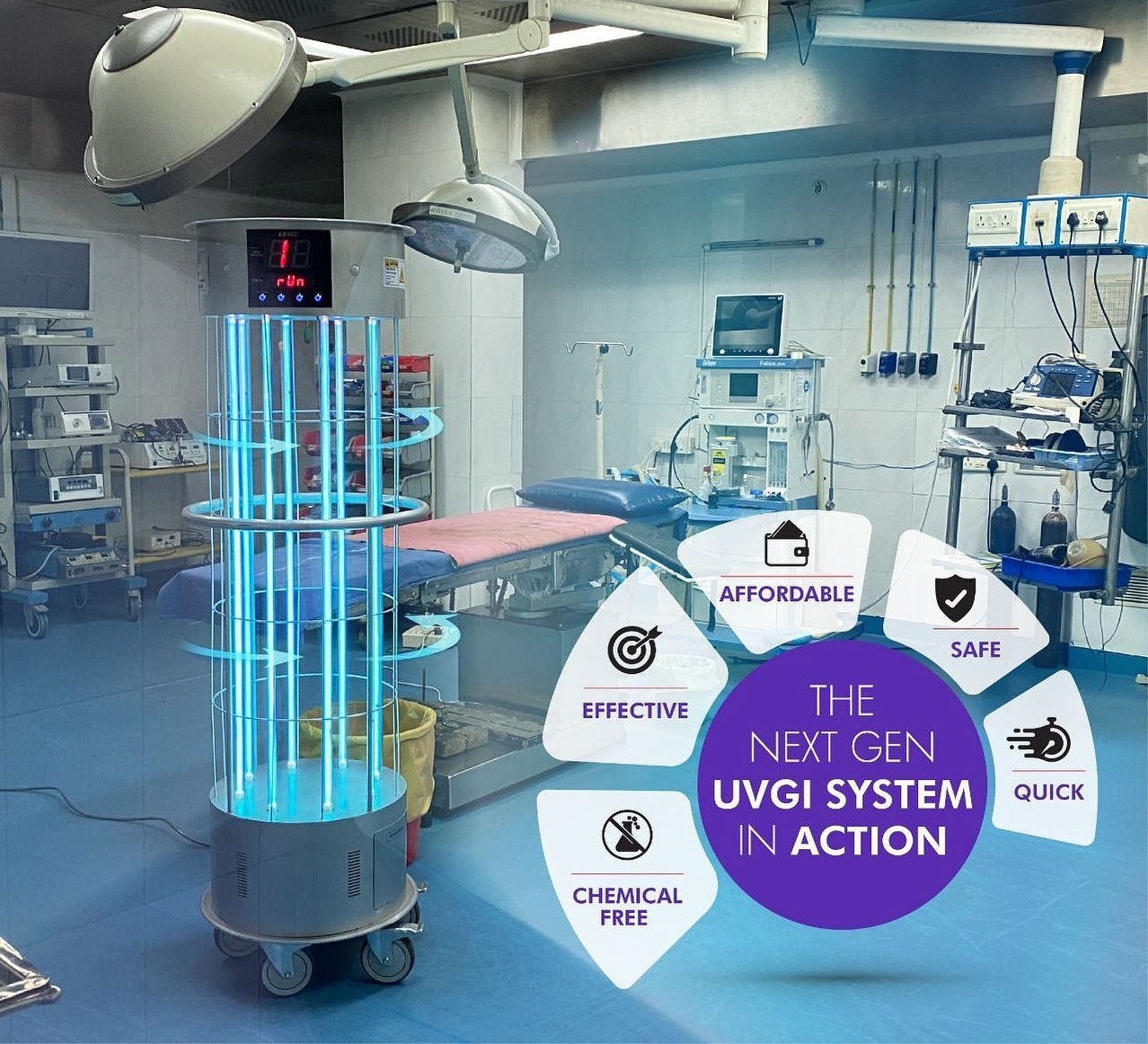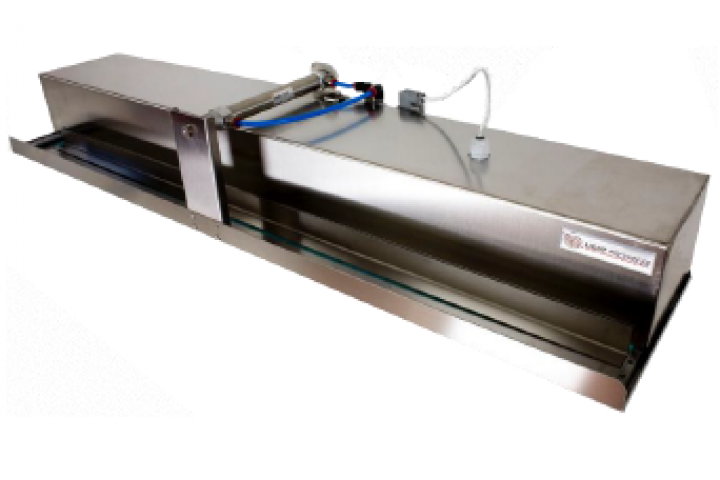UV Surface Disinfection Techniques: Maximizing Effectiveness for Germ-Free Spaces
Discovering UV Sanitation: An Essential Tool in the Battle Against Hazardous Virus
As the world encounters an ever-increasing threat from hazardous virus, the search for effective approaches of disinfection has ended up being an urgent concern. While standard cleansing techniques have shown some success, there is an expanding acknowledgment that we require to discover cutting-edge methods to fight these unseen opponents. One such approach that has actually gathered significant interest is UV disinfection. Taking advantage of the power of ultraviolet light, this modern technology has demonstrated encouraging cause eliminating a wide variety of virus. Just how does it function? What are the benefits? And where can it be applied? In this discussion, we will certainly dig into the globe of UV sanitation, uncovering its possible as an essential device in the fight versus dangerous virus.
How Does UV Sanitation Work?
UV sanitation works by using ultraviolet (UV) light to remove harmful microorganisms and stop their spread. This extremely effective approach involves using UV radiation to interfere with the DNA and RNA of microorganisms, providing them unable to reproduce and triggering their supreme damage.
When UV light is utilized for sanitation, it is usually released from a lamp or light bulb that generates a details wavelength of UV-C light. uv surface disinfection. This wavelength, varying from 200 to 280 nanometers, is specifically reliable at permeating the external cell wall of germs, infections, and other microorganisms. As soon as inside the cell, the UV radiation targets and harms the genetic material, preventing the bacterium from replicating and causing infection
UV sanitation systems are designed to send out the appropriate intensity and duration of UV light to guarantee effective microorganism elimination. The dosage of UV light needed for sanitation depends upon factors such as the sort of microorganism, its resistance to UV radiation, and the specific application. Additionally, the system must be carefully crafted to make certain proper direct exposure of the target virus and to avoid any type of possible damage to human beings or the environment.
The Benefits of UV Disinfection
UV sanitation supplies a wide range of benefits in successfully getting rid of unsafe microorganisms and reducing the danger of infection. One of the primary advantages of UV sanitation is its capability to offer a chemical-free and environmentally pleasant option. Unlike standard disinfection techniques that rely upon chemicals, UV sanitation uses ultraviolet light to damage the DNA and RNA of microorganisms, providing them not able to duplicate and trigger infections. This chemical-free method makes sure that no hazardous residues are left, eliminating any prospective wellness threats associated with chemical anti-bacterials.
One more considerable advantage of UV disinfection is its effectiveness in eliminating a wide array of virus. UV light has actually been proven to efficiently get rid of bacteria, infections, fungi, and protozoa, consisting of those that are resistant to traditional disinfectants. This broad-spectrum effectiveness makes UV disinfection a flexible tool in various settings, such as health care facilities, water treatment plants, and food handling markets.
Along with its efficacy, UV disinfection also offers fast sanitation cycles. Unlike other techniques that require extensive contact times or repetitive applications, UV sanitation can attain substantial pathogen reduction immediately. This efficient and fast process permits enhanced efficiency, decreased downtime, and enhanced total functional effectiveness.
Moreover, UV disinfection is a non-contact method, which indicates that it does not require direct physical call with the things or surfaces being disinfected. This function makes it ideal for use on delicate devices and delicate materials that may be damaged or influenced by other disinfection techniques.
Applications of UV Sanitation in Healthcare

UV disinfection is additionally made use of in the sanitation of clinical equipment and tools. Additionally, UV disinfection is utilized in water treatment systems within medical care centers.
Additionally, UV disinfection innovation is utilized in the sanitation of medical care attires and personal safety equipment (PPE) By utilizing UV light, medical care experts can make sure that their uniforms and PPE are without microorganisms, stopping the transmission of infections between individuals and health care employees.
UV Sanitation in Public Spaces
Public rooms are significantly implementing UV sanitation technology as a critical action to combat the spread of unsafe microorganisms. With the ongoing global pandemic and the continuous threat of transmittable illness, the demand for efficient sanitation techniques in public locations has actually become extremely important. UV sanitation supplies a trusted and reliable solution hereof.

UV disinfection systems use ultraviolet light to shut down the DNA and RNA of microorganisms, infections, and other microorganisms. This process interrupts their ability to duplicate and make them safe. These systems can be set up in different public spaces, including a/c systems, escalators, elevators, and surface sanitation robotics. Using UV disinfection technology in public rooms not only assists in lowering the danger of infection yet also instills self-confidence among the public concerning their safety.
As public areas remain to adapt to the difficulties presented by transmittable conditions, UV sanitation innovation plays an essential duty in making sure a safe and tidy atmosphere. By carrying out such procedures, public spaces can properly minimize the spread of unsafe pathogens and add to the overall wellness of the neighborhood.
The Future of UV Sanitation Technology
As go to these guys the demand for enhanced disinfection approaches continues to grow in feedback to the recurring international pandemic and the consistent risk of infectious diseases, the future of UV disinfection technology holds encouraging improvements in making sure also extra efficient and reliable microorganism removal in numerous settings.

One location of advancement is the growth of more compact and mobile UV disinfection tools. These gadgets would enable easier and a lot more flexible release in a selection of setups, such as workplaces, institutions, and transportation systems. Furthermore, improvements in automation and robotics are being discovered to improve the performance and effectiveness of UV disinfection processes. This includes the usage of autonomous robots equipped with UV-C lights to browse and disinfect big locations quickly and precisely.
Another area of exploration is using UV disinfection in air filtration systems. By integrating UV-C lights into heating and cooling systems, airborne virus can be successfully neutralized, lowering web the threat of transmission in indoor atmospheres.
Additionally, scientists are checking out using UV disinfection in food processing centers to ensure the security and top quality of food. UV-C light has been found to be reliable in eliminating foodborne virus, using a chemical-free choice to conventional sanitation methods.
Verdict
In final thought, UV disinfection is an important device in the fight versus damaging pathogens. With its ability to give a chemical-free and eco pleasant method of sanitation, UV modern technology holds fantastic prospective for the future.
UV disinfection systems are developed to produce the ideal strength and period of UV light to ensure effective virus removal. useful reference The dose of UV light needed for sanitation depends on factors such as the kind of microbe, its resistance to UV radiation, and the details application. Unlike traditional disinfection methods that rely on chemicals, UV disinfection makes use of ultraviolet light to ruin the DNA and RNA of microbes, rendering them not able to replicate and cause infections.In addition to its effectiveness, UV disinfection also uses rapid sanitation cycles. One of the major applications of UV disinfection in health care is in the disinfection of individual rooms and operating cinemas.